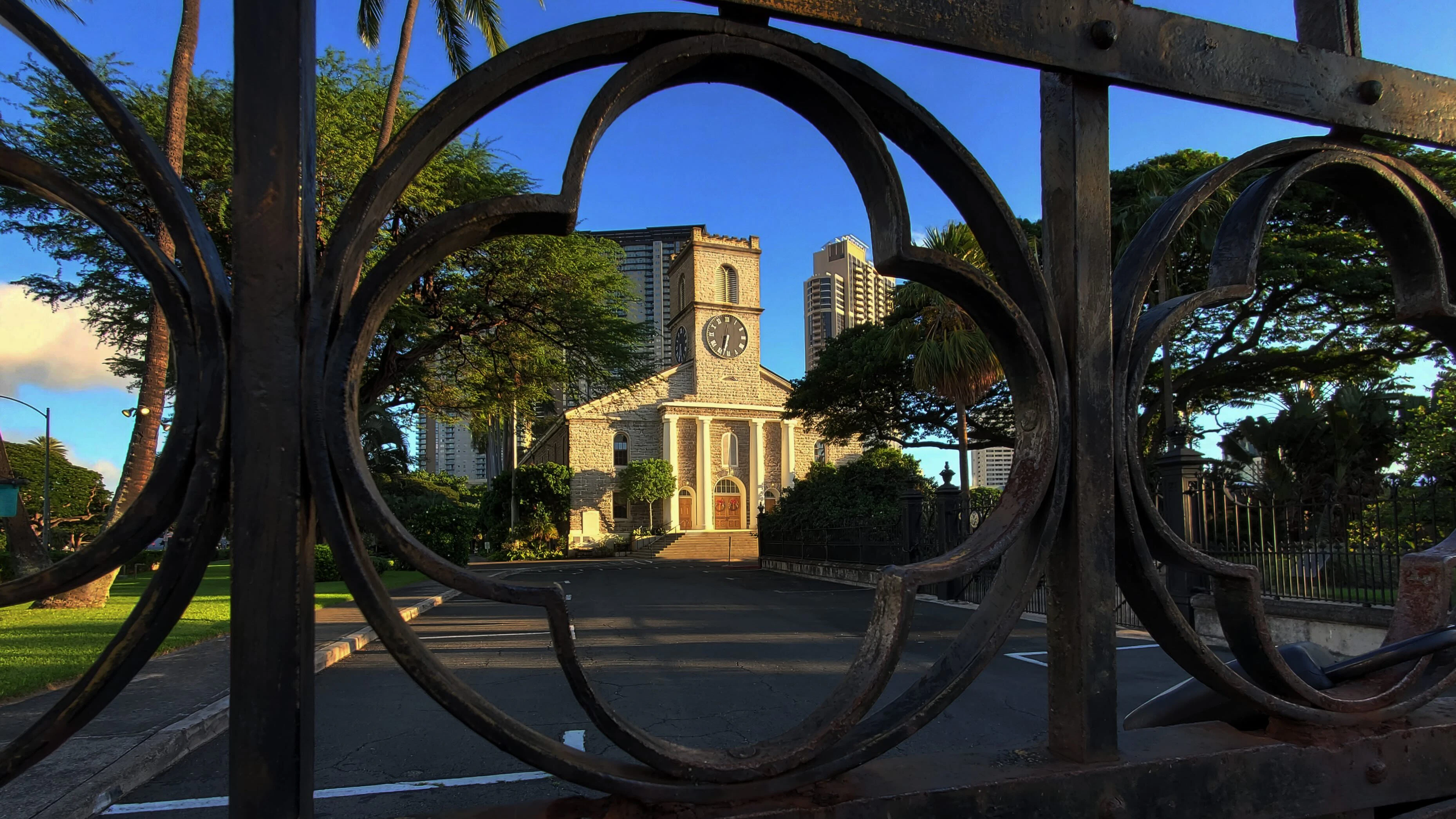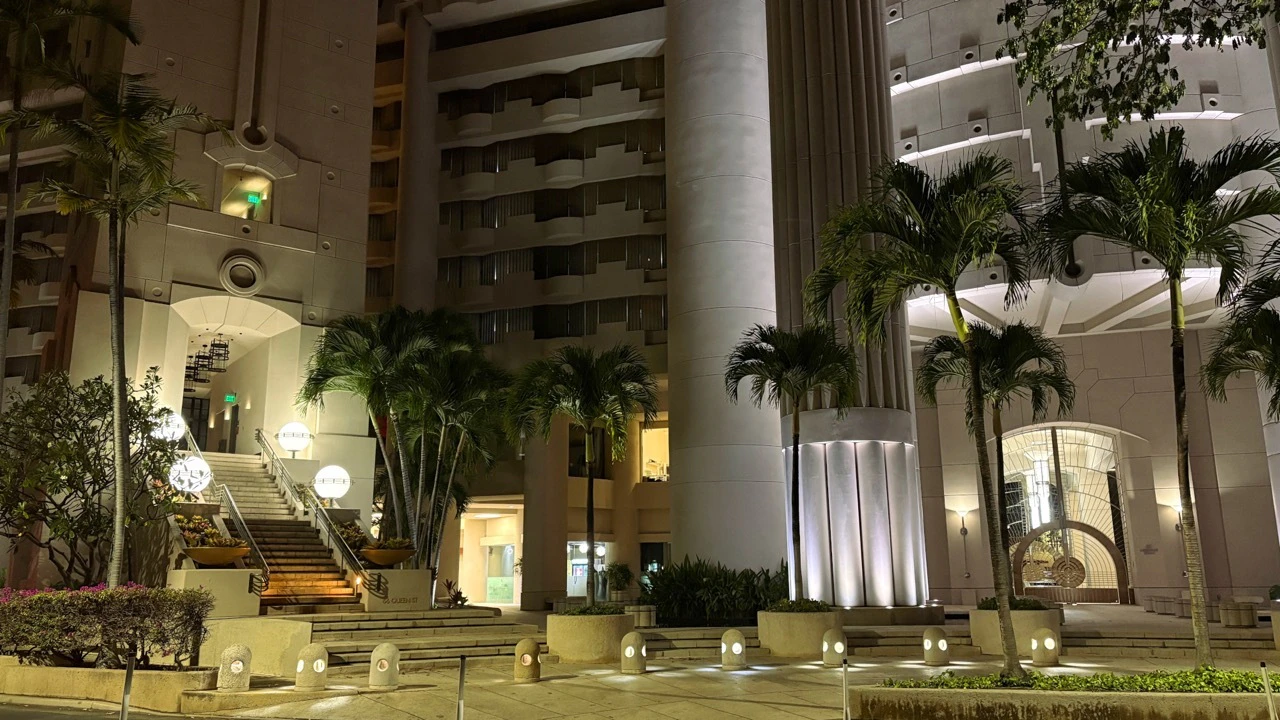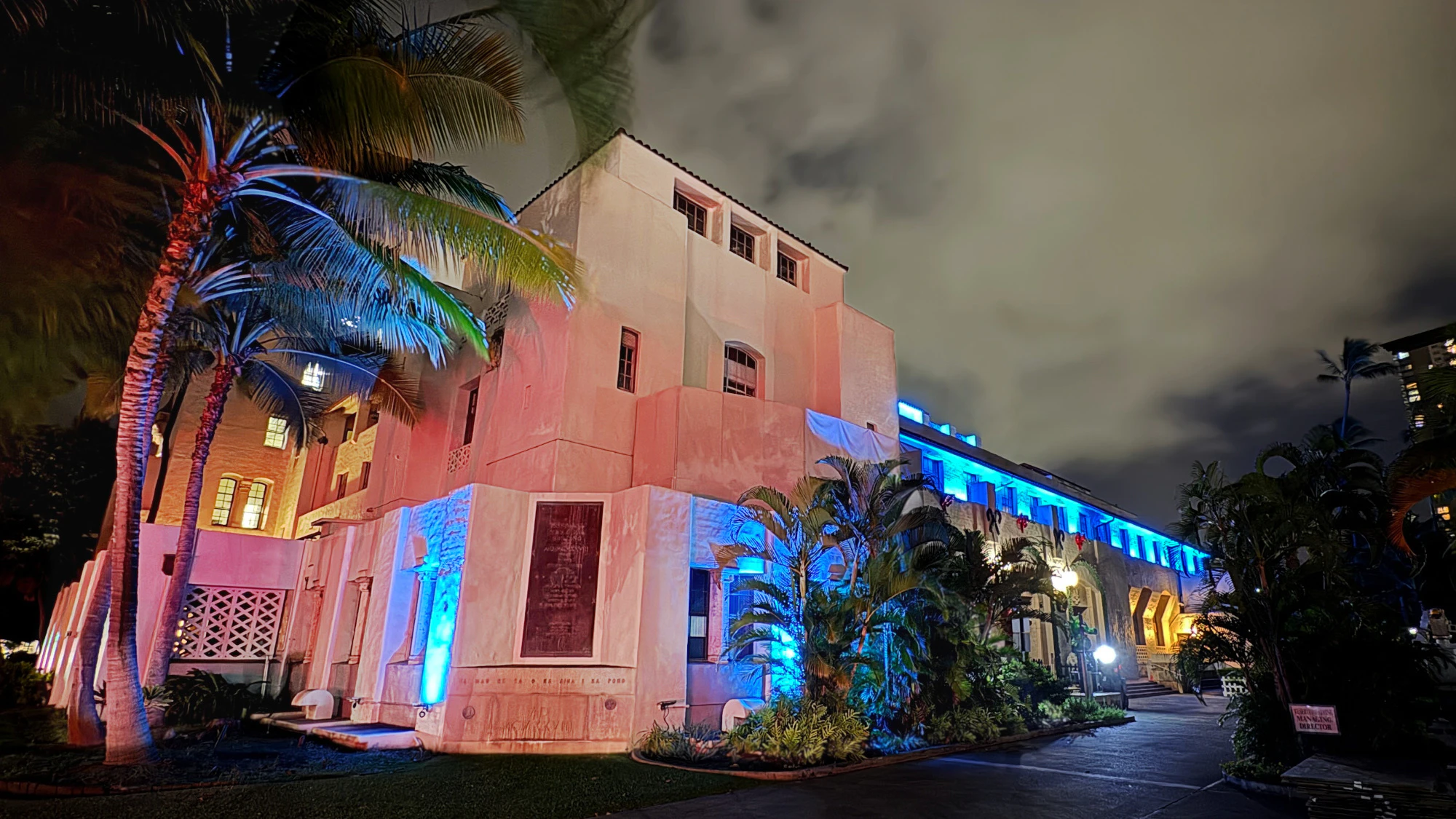Long before Honolulu came into being, the Ali‘i Nui (High Chiefess) Ha‘o would visit a quiet spring in the center of the dry, flat plain near what is now South Street, just below King Street. This spring fed a wide pool of brackish water, offering cool relief on hot, sunny days. A large, sacred lava stone was set at the mouth of the spring to raise the water level. In this upper pool, where water flowed over the stone, only ali‘i were allowed to bathe or quench their thirst. In the calm pool below, commoners were allowed to partake in ka wai a Ha‘o, the water of Ha‘o. In those early days, the land surrounding the spring became known as Kawaiaha‘o by Hawaiians.
Upon the arrival of American missionaries in 1819, Governor Boki allotted the newcomers a piece of land at Kawaiaha‘o, near the village of Honolulu to live and work. They lived in hale pili (grass houses) and built a small church, thus establishing it as the oldest Christian church on O‘ahu. Hawaiians called this early thatched structure Ka Hale Pule (The House of Prayer) or Ka Hale Halawai (The Meeting House). Attended by Hawaiian royalty of the time, many referred to it as the King’s Chapel, but most non-native people in those days called it the Native Church.
In 1837, after open-air services and four iterations of thatched churches on this site, work commenced on gathering materials for the construction of a new stone church that included cutting large blocks of coral from the nearby reef. Records show that nearly 14,000 coral slabs, some of them weighing over a thousand pounds, were cut from the reef (sometimes almost twenty feet below the surface), dragged from the shoreline in large hand trucks by dozens of Hawaiian men, and set in various piles around the churchyard among the rising walls of the structure. Working patiently day by day, the men used a system of ropes and pulleys to lift the stones and set them in place.
Finally, after seven years, the humble thatched chapel a mile away from the center of Honolulu village became the great Stone Church. Although construction finished in 1842, it wasn’t until 1863 that the church became known officially as Kawaiaha‘o.
For decades after its completion, the Stone Church stood as a symbol of faith and change, its coral walls witnessing the gathering of the Hawaiian people and their important life events, including the weddings and funerals of Hawaii’s royalty. However, as time passed and the city of Honolulu grew up around it, whispers began to surface that the church and its grounds held more than just history. By the turn of the century, local newspapers started printing strange tales of voices echoing in the church late at night where no one was present and ghosts bobbing up in the graveyard. Retired Honolulu Police Department Major Gary Dias wrote about several strange instances in the 1970s and ’80s in his book "Honolulu Cop," including reports of sprinklers turning on by themselves, loud music inside the empty church, and locked doors in the preschool suddenly swinging open.
Before I began my journey as a full-time storyteller, I was a preschool teacher and worked at two different schools located on the grounds of Kawaiaha‘o Church. One was a Hawaiian immersion preschool, and the other was a church-run preschool. Both schools stood at the east end of the church graveyard.
Around 2001, at the Hawaiian immersion school, we checked in all the keiki, and the newest kumu began to gather everyone for lina poe poe (circle time). She noticed a group of three or four keiki run into the bathroom, giggling as they went. The kumu said the door was locked when she tried to open it. She called out to them and let them know that they should come out, but all she could hear among the children’s laughter was the sound of them pulling the toilet paper off the roller. Whirrrr! Whirrrr!
Finally, the room was quiet. The lock on the doorknob clicked, and the door opened quietly. The bathroom was empty, but there was toilet paper everywhere. The kumu quit that morning.
About a year later, when I worked at the church school, the director pointed out that the security firm called all the time in the middle of the night, stating that someone could hear furniture moving about the classroom.
“They also heard several voices speaking in Hawaiian, men and women,” she said.
She then said that a kupuna (elder) from the church listened to the recording and translated the Hawaiian message into English.
“Our bones are being disrespected. What are we going to do about our bones?”
Two beautiful kumu ulu (breadfruit trees) whose branches reached out like welcoming arms stood in front of the buildings. If the weather was agreeable, snack time in the afternoons often meant spreading mats out under these trees where the children could sit and enjoy the comforting shade. Quite often, when it was time to line up and walk back to class, a few of the children would insist that we’d forgotten someone. The teachers would perform a head count and ensure that all the keiki were present, but the little ones insisted that two or three more children were sitting on the mats. It happened so often that we believed the children had created their own game teasing the grownups, for the teachers never saw anyone else sitting under the tree.
Years later, when I was no longer at the school, I took a shortcut through the graveyard on my way to the Mission Houses Museum. While passing the two ulu trees, I noticed three headstones nearby with those old egg-shaped black-and-white porcelain pictures on them. All three were children. I hadn’t realized just how many children are buried in the church graveyard, and I wondered if the keiki in our classes really did see other children sitting on the mats under the tree.





